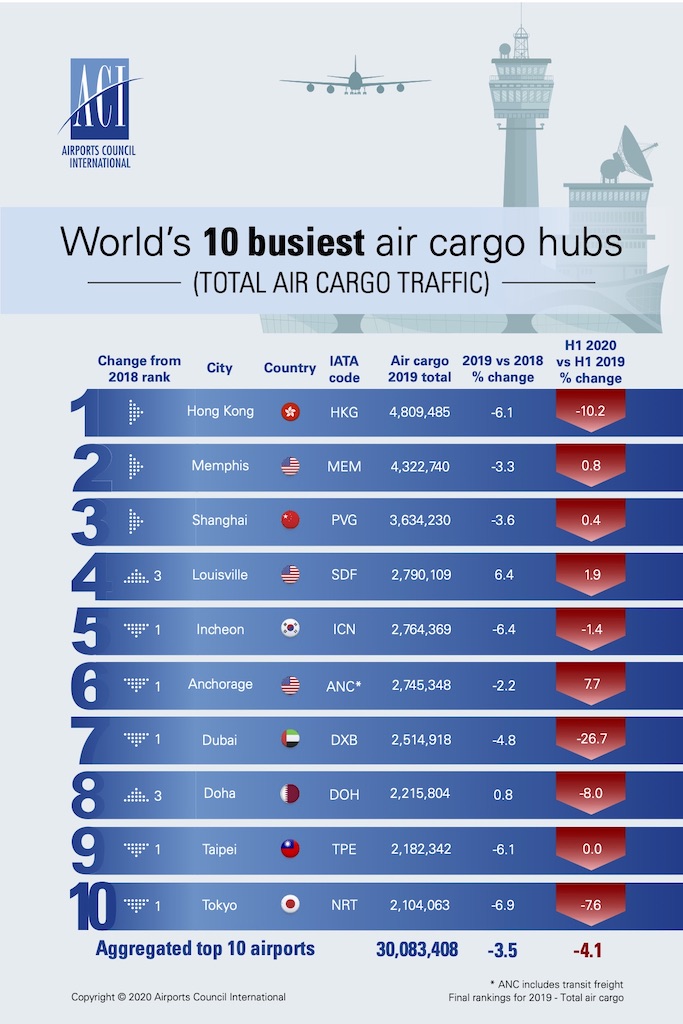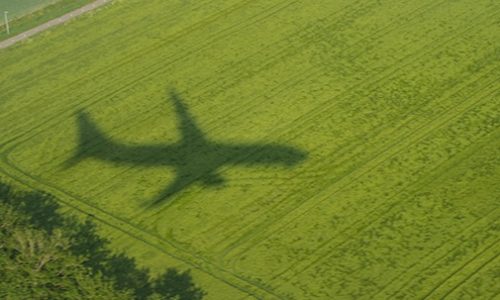Airports Council International (ACI World) has published its World Airport Traffic Report (WATR) along with data showing the dramatic and catastrophic impact of the COVID-19 pandemic on passenger traffic.
According to the report, passenger numbers are estimated to have surpassed 9.1bn in 2019, an increase of +3.5% compared to 2018, illustrating a healthy aviation industry before the catastrophic impact of the current pandemic.
In addition, the world’s airports handled 119.9 million metric tonnes of cargo, a decrease of -2.2% compared to 2018. Advanced economies held the largest proportion (60.8%) of global cargo traffic handling 73 million metric tonnes in 2019. Globally, airports also handled more than 102 million aircraft movements, an increase of +1.7% year-over-year.
Top ten rankings for 2019 (Cargo Traffic) with the effect of the pandemic in the first half of 2020

Last year marked the end of a decade of consistent growth in global passenger traffic before the ongoing COVID-19 crisis has brought airports around the world to a virtual standstill, resulting in airport traffic and revenue losses across all regions.
For the first half of 2020, worldwide airport passenger numbers decreased by -58.4% compared to the same period in 2019, with international passenger traffic hit the hardest, recording a -64.5% drop. Overall aircraft movements declined by -41.6% while total cargo volumes handled by airports decreased by -12.4%, for the same period.
Top 10 rankings for 2019 (Passenger Traffic) with the effect of the pandemic the first half of 2020

While Atlanta and Beijing held the top two places as the world’s busiest airports, and Los Angeles crept up one spot to take third in 2019, initial half year 2020 data shows that these airports have suffered declines of -56.6%, -73.6% and -58.9% respectively, representing the sharpest decline in the industry’s history.
“From a period of sustained global growth in 2019, the aviation industry now faces the worst crisis we have ever confronted with huge declines in passenger traffic and revenues due to the impact of the COVID-19 pandemic,” ACI World Director General Luis Felipe de Oliveira said.
“Aviation – and airports as a key focal point of the industry – will be a key driver of the global economic recovery from COVID-19 and governments need to provide assistance and coordination to help safeguard jobs, protect essential operations, and provide sensible policies to facilitate the return of air connectivity.
“We are positive about the future, but we need consistency and collaboration across the globe on key issues like testing. The industry is united in the view that widespread testing of passengers before travel, as an alternative to quarantine restrictions, will be a crucial way to foster public confidence in air travel and must be introduced.
“As we begin the long and difficult journey back to the levels of success seen in 2019, we need to work together across the industry and hand in hand with ICAO and international health organisations to develop a global approach to testing that will help establish consistent and workable procedures. This is the way.”
ACI’s WATR is the authoritative source and industry reference for airport traffic trends and rankings including data from 2,565 airports in more than 180 countries worldwide. This year’s report contains the most comprehensive data ever collected by ACI World.
In 2019, airport traffic in emerging markets and developing economies grew slightly faster (+3.9%) than in advanced economies (+3.1%). Africa (+6.0%) and Latin America-Caribbean (+4.4%) posted strong growth of all regions in passenger traffic.

